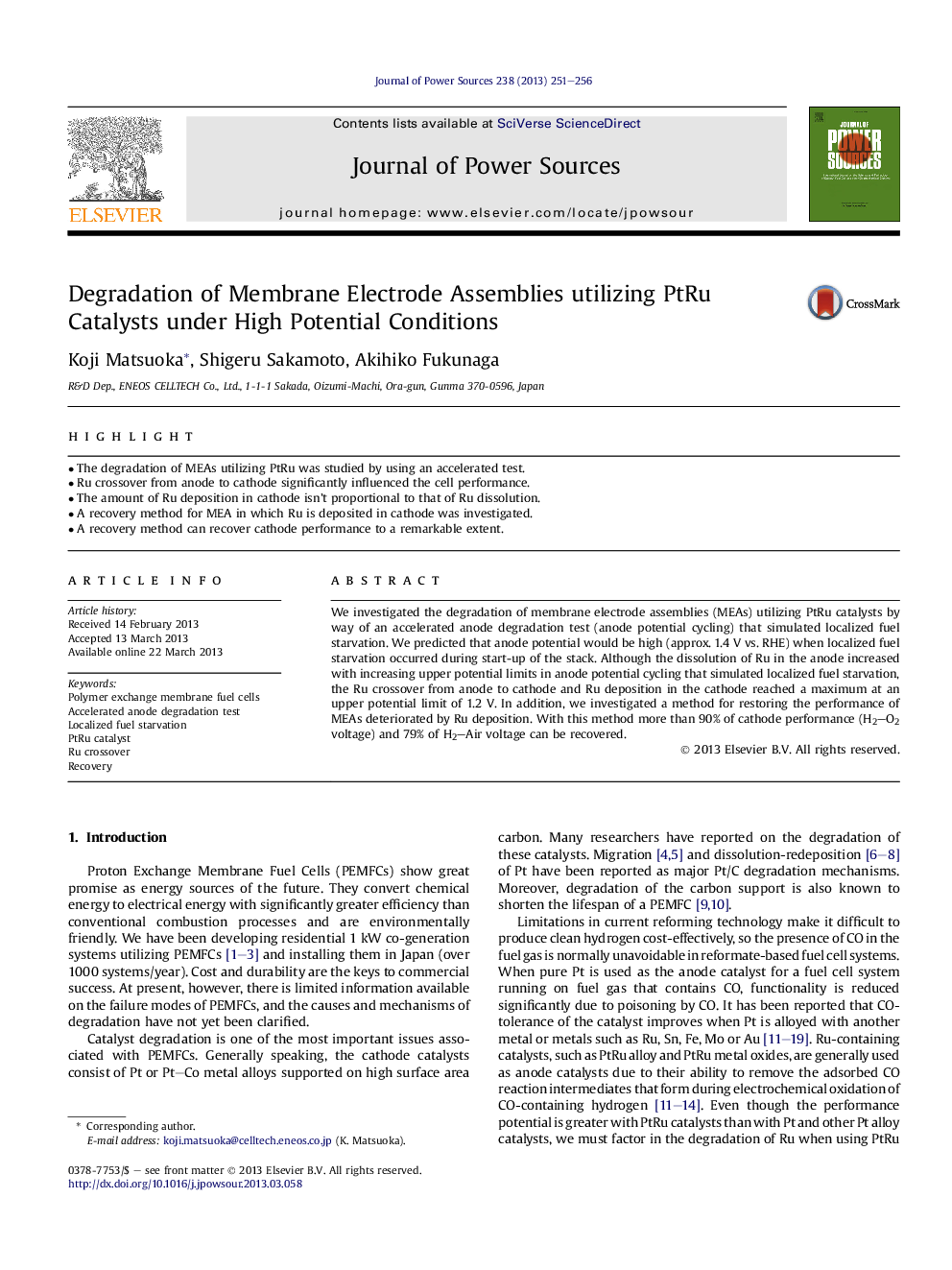| Article ID | Journal | Published Year | Pages | File Type |
|---|---|---|---|---|
| 1284352 | Journal of Power Sources | 2013 | 6 Pages |
Highlight•The degradation of MEAs utilizing PtRu was studied by using an accelerated test.•Ru crossover from anode to cathode significantly influenced the cell performance.•The amount of Ru deposition in cathode isn't proportional to that of Ru dissolution.•A recovery method for MEA in which Ru is deposited in cathode was investigated.•A recovery method can recover cathode performance to a remarkable extent.
We investigated the degradation of membrane electrode assemblies (MEAs) utilizing PtRu catalysts by way of an accelerated anode degradation test (anode potential cycling) that simulated localized fuel starvation. We predicted that anode potential would be high (approx. 1.4 V vs. RHE) when localized fuel starvation occurred during start-up of the stack. Although the dissolution of Ru in the anode increased with increasing upper potential limits in anode potential cycling that simulated localized fuel starvation, the Ru crossover from anode to cathode and Ru deposition in the cathode reached a maximum at an upper potential limit of 1.2 V. In addition, we investigated a method for restoring the performance of MEAs deteriorated by Ru deposition. With this method more than 90% of cathode performance (H2–O2 voltage) and 79% of H2–Air voltage can be recovered.
